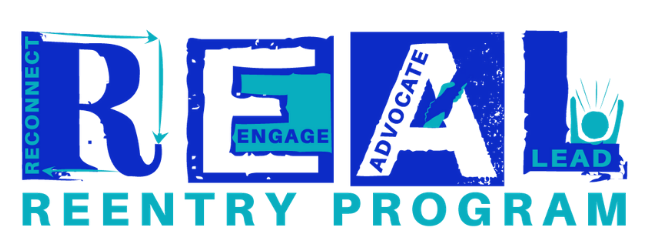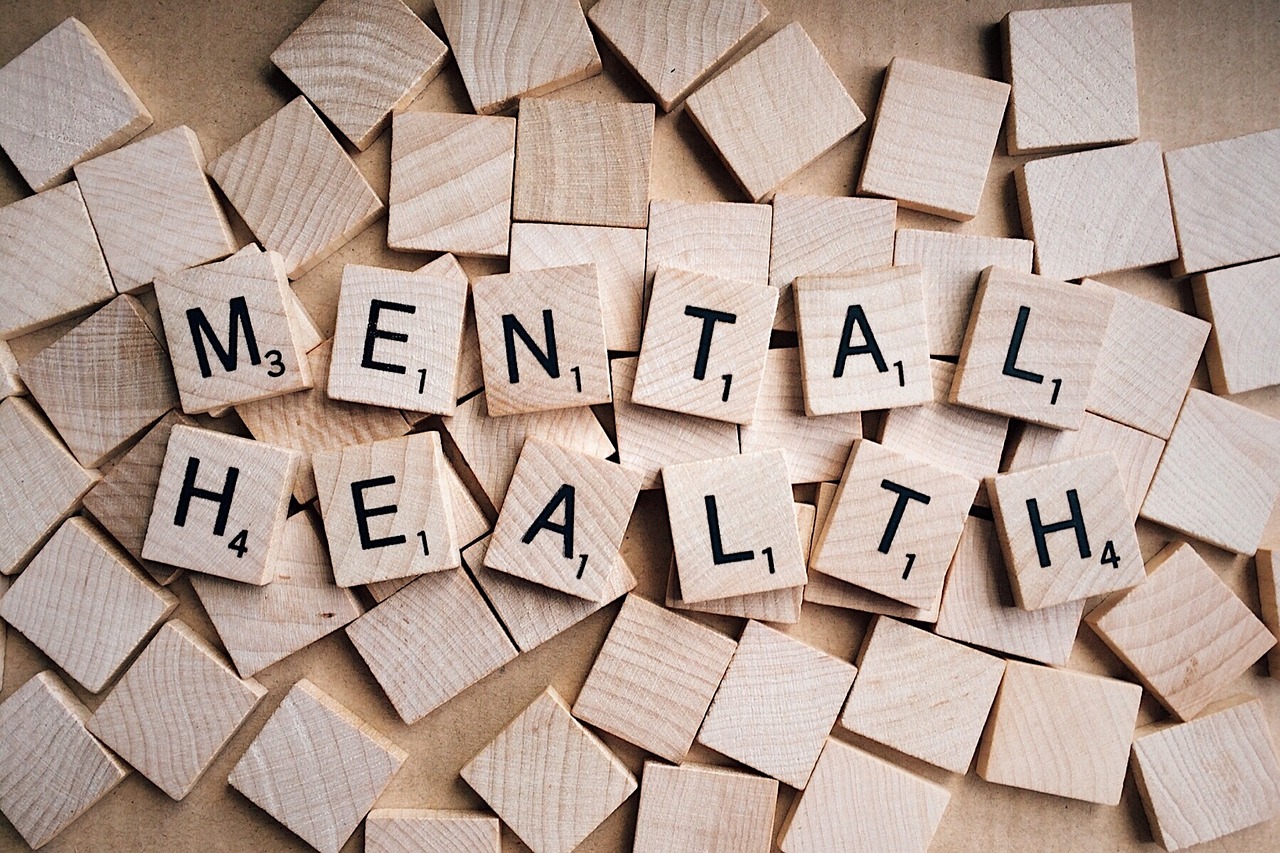Table of Contents
- Reducing Recidivism
- Strengthening Communities
- Restoring Lives
- Employment Barriers
- Housing Instability
- Reconnecting with Family
- Substance Abuse and Mental Health
- Access to Education and Training
- Job Training and Placement
- Housing Assistance
- Mental Health and Substance Abuse Treatment
- Family Reunification
- Education and Skills Development
- Community Support and Mentorship
Reentry into society after incarceration is a critical phase in the criminal justice process. It is a time when formerly incarcerated individuals face numerous challenges and opportunities. Community reintegration programs play a pivotal role in supporting these individuals as they transition back into their communities. In this article, we will explore the importance of successful reentry, the challenges that formerly incarcerated individuals encounter, and the key role that community-based programs play in facilitating a smooth and productive transition.
Reentry into society after incarceration is a critical phase in the criminal justice process. It is a time when formerly incarcerated individuals face numerous challenges and opportunities. Community reintegration programs play a pivotal role in supporting these individuals as they transition back into their communities. In this article, we will explore the importance of successful reentry, the challenges that formerly incarcerated individuals encounter, and the key role that community-based programs play in facilitating a smooth and productive transition.
The Importance of Successful Reentry:
Reducing Recidivism: Successful reentry is essential for reducing recidivism rates. When individuals receive the necessary support and resources to reintegrate into society, they are less likely to return to a life of crime, benefiting both the individuals themselves and the community.
Public Safety: Ensuring that formerly incarcerated individuals have a stable and law-abiding reentry is crucial for public safety. When individuals receive the support they need, it contributes to safer neighborhoods and fewer instances of crime.
Rebuilding Lives: Successful reentry represents an opportunity for individuals to rebuild their lives. It allows them to pursue education, employment, and meaningful relationships, ultimately leading to a sense of purpose and self-worth.
Challenges Faced by Formerly Incarcerated Individuals:
Employment Barriers: Finding stable employment is often one of the most significant challenges for formerly incarcerated individuals. Many employers are hesitant to hire individuals with criminal records, leading to financial instability.
Housing Issues: Securing safe and stable housing can be difficult for those with criminal records. This instability can hinder reintegration efforts and increase the risk of homelessness.
Social Stigma: Individuals leaving the criminal justice system often face social stigma and discrimination, which can lead to isolation and hinder their ability to build positive relationships.
Mental Health and Substance Abuse: Many formerly incarcerated individuals struggle with mental health issues or substance abuse problems. Access to treatment and support is critical to addressing these underlying challenges.
The Role of Community-Based Programs:
Employment Assistance: Community reintegration programs offer job training, resume building, and job placement services. They work with employers willing to give formerly incarcerated individuals a second chance.
Housing Support: Some programs provide housing assistance or connect individuals with affordable housing options, reducing the risk of homelessness.
Mental Health and Counseling: Many community-based programs offer counseling and mental health services, addressing underlying issues that may have contributed to incarceration.
Education and Skills Development: Programs often provide access to education and skills development opportunities, helping individuals acquire new skills and pursue educational goals.
Peer Support: Peer mentoring and support networks within these programs offer a sense of community and understanding, helping individuals navigate the challenges of reentry.
Legal Assistance: Some programs assist individuals with legal matters, such as expungement or record sealing, to improve their chances of securing employment and housing.
Access to Benefits: Community-based programs help individuals access benefits like Medicaid, food assistance, or child support, providing crucial financial support.
Conclusion:
Successful reentry is not only a matter of personal transformation but also a societal imperative. By addressing the challenges faced by formerly incarcerated individuals and providing them with the necessary support and resources, community-based programs play a vital role in helping individuals rebuild their lives, reduce recidivism, and create safer and more inclusive communities. This article will delve into the various aspects of reentry and highlight the programs and strategies that contribute to its success.
Explore this link for a more extensive examination of the topic: Incarceration, Prisoner Reentry, and Communities – PMC
Reducing Recidivism
Successful reentry programs aim to break the cycle of recidivism by providing the necessary support and resources for individuals to avoid reoffending and returning to the criminal justice system.
Successful reentry programs are the cornerstone of a more effective and humane criminal justice system, as they go beyond punitive measures to address the root causes of recidivism. These programs recognize that individuals who have served their sentences deserve a fair chance to reintegrate into society as productive, law-abiding citizens.
At their core, reentry programs emphasize the importance of rehabilitation and reformation over mere punishment. They offer a lifeline to individuals reentering society, providing them with a range of crucial resources and support. This includes access to job training and employment opportunities, which are fundamental in helping formerly incarcerated individuals secure stable income and regain their financial independence.
Moreover, reentry programs recognize the significance of mental health and substance abuse treatment. Many individuals in the criminal justice system have underlying mental health issues or addiction problems that may have contributed to their involvement in criminal activities. Effective reentry programs provide counseling, therapy, and access to rehabilitation services, addressing these core issues and reducing the likelihood of relapse.
Education is another vital component. Equipping individuals with educational opportunities, whether it’s completing a high school diploma, pursuing higher education, or gaining vocational skills, empowers them to pursue new avenues in life and break free from the cycle of criminal behavior.
Support networks within reentry programs offer a sense of community and belonging, reducing feelings of isolation and alienation that often lead to reoffending. Mentorship programs connect individuals with mentors who have successfully reintegrated into society, providing invaluable guidance and inspiration.
Legal assistance is equally important. Many individuals face barriers such as parole or probation restrictions, housing challenges, or difficulties accessing government benefits. Reentry programs help navigate these legal obstacles, ensuring that individuals have a fair chance at a fresh start.
Successful reentry programs are not only beneficial for the individuals involved but also for society as a whole. They reduce the burden on the criminal justice system, save taxpayer dollars, and make communities safer by reducing recidivism rates.
As we move forward, it’s imperative to continue investing in and expanding reentry programs. By doing so, we can break the cycle of recidivism, restore the dignity of individuals who have paid their debt to society, and foster a more just and compassionate criminal justice system.
Additionally, you can find further information on this topic by visiting this page: The Prevention of Recidivism and the Social Reintegration of …

Strengthening Communities
When formerly incarcerated individuals successfully reintegrate into their communities, it contributes to community safety and well-being. It fosters a sense of responsibility and positive engagement among returning citizens.
The successful reintegration of formerly incarcerated individuals into their communities is a crucial component of enhancing overall community safety and well-being. This process represents a transformative journey that not only benefits returning citizens but also uplifts the entire community.
One of the most significant impacts of successful reintegration is the restoration of a sense of responsibility among returning citizens. When individuals who have served their time are able to reintegrate effectively, they often feel a renewed commitment to being law-abiding, productive members of society. This sense of responsibility extends beyond their personal actions; it ripples through their interactions with family, friends, and neighbors. They become role models for positive behavior, demonstrating to others that transformation and change are possible.
Moreover, successful reintegration fosters positive engagement within the community. Reintegrating individuals, having experienced the challenges of incarceration, often develop a deep sense of empathy and understanding for the struggles faced by others. As a result, they frequently become actively engaged in community initiatives, volunteering, or even pursuing careers in fields related to social work, counseling, or advocacy. This positive engagement not only benefits individuals in need but also strengthens the social fabric of the community as a whole.
Additionally, when formerly incarcerated individuals successfully reintegrate, they are more likely to contribute economically to their communities. Gainful employment and financial stability become attainable goals, reducing the strain on social services and diminishing the likelihood of engaging in criminal activity to meet basic needs.
Overall, the successful reintegration of formerly incarcerated individuals has a profound and positive impact on both individual lives and the broader community. It represents a beacon of hope and a testament to the power of rehabilitation and second chances. By fostering a sense of responsibility, positive engagement, and economic contribution, it paves the way for safer, healthier, and more vibrant communities.
To expand your knowledge on this subject, make sure to read on at this location: Reentry | Youth.gov

Restoring Lives
Successful reentry is not just about avoiding criminal activity but also about rebuilding lives. It involves finding stable housing, employment, and reestablishing connections with family and loved ones.
nullDon’t stop here; you can continue your exploration by following this link for more details: Transforming Prisons, Restoring Lives | Urban Institute

Employment Barriers
Finding gainful employment is one of the most significant challenges for individuals with a criminal record. Many employers are hesitant to hire formerly incarcerated individuals, which can lead to unemployment or underemployment.
Securing stable and gainful employment stands as a formidable obstacle for those with a criminal record. The barriers they face often extend far beyond their release from incarceration, casting a long shadow on their prospects for reintegration into society.
A primary concern is the pervasive reluctance among employers to hire individuals with a criminal history. This stigma creates a vicious cycle where those seeking to rebuild their lives find themselves caught between a past mistake and a future filled with uncertainty. Many employers perceive hiring formerly incarcerated individuals as a risk to their business or workforce, further exacerbating the challenge.
This unfortunate reality often results in unemployment or underemployment for those with criminal records. The consequences of this go beyond personal struggles and impact families, communities, and society as a whole. When individuals cannot secure stable employment, it becomes increasingly challenging to meet their basic needs, maintain financial stability, and contribute positively to their communities.
To address this pressing issue, it is imperative to promote fair hiring practices and provide support mechanisms for individuals reentering society after incarceration. This may involve advocating for “Ban the Box” policies that restrict inquiries into an applicant’s criminal history during the initial stages of the hiring process, allowing individuals to demonstrate their qualifications and skills first.
Additionally, the development of reentry programs that offer job training, skills development, and educational opportunities can significantly enhance the employability of formerly incarcerated individuals. By equipping them with the tools necessary to secure gainful employment, these programs break down the barriers that often perpetuate the cycle of recidivism.
Ultimately, recognizing the value of second chances and fostering a more inclusive workforce benefits not only individuals with criminal records but also society at large. It reduces the likelihood of re-offending, strengthens families, and contributes to safer and more prosperous communities. By addressing the employment challenges faced by this population, we move closer to creating a fair and just society where opportunities are available to all, regardless of their past mistakes.
Additionally, you can find further information on this topic by visiting this page: SUCCESSFUL REENTRY: A COMMUNITY-LEVEL ANALYSIS

Housing Instability
Securing stable housing can be difficult, as individuals with criminal records may face discrimination in the housing market. This can lead to homelessness or unstable living situations.
The challenge of securing stable housing for formerly incarcerated individuals is a complex issue with far-reaching consequences. The discrimination they encounter in the housing market can have a profound impact on their successful reintegration into society:
Homelessness: Housing discrimination can lead to homelessness, which is not only a significant social issue but also a barrier to accessing essential services and opportunities. Without stable housing, individuals face the risk of exposure to the elements, hunger, and increased vulnerability to crime.
Family Reunification: Reconnecting with family members and rebuilding support networks is a crucial aspect of successful reentry. However, the instability caused by housing discrimination can strain family relationships and hinder the reintegration process.
Employment Stability: Stable housing is closely linked to employment stability. Without a permanent address, it becomes challenging to secure and maintain gainful employment, as many employers require a stable address as part of their hiring criteria.
Health and Well-being: Housing instability can take a toll on physical and mental health. Individuals facing homelessness or unstable living situations are more susceptible to stress-related illnesses, mental health challenges, and reduced access to healthcare services.
Recidivism Risk: Housing instability can increase the risk of recidivism. Without a stable place to live, individuals may turn to survival strategies that involve criminal activity, undoing the progress they’ve made in rehabilitation and reentry programs.
To address the housing challenges faced by returning citizens, several initiatives and policy measures are being explored:
Ban the Box: “Ban the Box” policies, which remove the checkbox on job applications that asks about criminal history, are being extended to housing applications as well. This helps individuals secure housing without immediate bias.
Fair Housing Laws: Advocates are pushing for stronger enforcement of fair housing laws to prevent discrimination against individuals with criminal records in the housing market.
Supportive Housing Programs: These programs combine housing with supportive services, such as mental health counseling and substance abuse treatment, to help individuals maintain stable housing.
Transitional Housing: Transitional housing options offer temporary accommodations and support to individuals while they work toward securing permanent housing.
Reentry Housing Programs: Specific housing programs tailored to the needs of formerly incarcerated individuals are being developed to provide a bridge between incarceration and stable housing.
In conclusion, the housing challenges faced by individuals with criminal records are deeply intertwined with their successful reintegration into society. Addressing housing discrimination and providing access to stable housing is not only a matter of justice but also a practical approach to reducing recidivism and promoting positive community engagement. Efforts to enact policy changes and expand supportive housing initiatives are essential steps toward breaking the cycle of homelessness and instability that returning citizens often face.
For a comprehensive look at this subject, we invite you to read more on this dedicated page: The Prevention of Recidivism and the Social Reintegration of …

Reconnecting with Family
Rebuilding relationships with family members after incarceration can be emotionally challenging, as the dynamics may have changed during the individual’s absence.
Rebuilding relationships with family members after incarceration can be emotionally challenging, as the dynamics may have changed during the individual’s absence. This period of separation can strain the bonds that once held the family together, and the process of reintegration often requires patience, understanding, and effort from both sides.
For individuals who have been incarcerated, the journey back into the family unit is often accompanied by a mix of emotions, including guilt, shame, and anxiety. They may fear rejection, judgment, or disappointment from their loved ones. Additionally, the stigma associated with having a family member in prison can create a barrier to open communication and reestablishing trust.
On the other hand, family members who have been on the outside may have experienced their own challenges and changes during the absence of their loved one. They might have taken on new roles and responsibilities or developed coping mechanisms to deal with the emotional toll of having a family member incarcerated. These adaptations can sometimes make it difficult to readjust to the returning individual’s presence and reintegrate them into the family dynamic.
Effective communication is vital in this process of rebuilding relationships. It’s essential for both the returning individual and their family members to express their feelings, concerns, and expectations openly. This communication can help address any misunderstandings, resentments, or unresolved issues that may have arisen during the period of separation.
Moreover, it’s crucial to set realistic expectations for the reintegration process. Reconnecting with family members doesn’t happen overnight, and it may involve setbacks and challenges along the way. Patience and empathy are key virtues, as is the willingness to seek outside support when needed, such as through counseling or support groups.
Family therapy and counseling can be particularly beneficial in navigating the complexities of rebuilding relationships post-incarceration. These professional resources provide a safe and neutral space for families to address their concerns, learn effective communication strategies, and work through any underlying issues that may be hindering the healing process.
Ultimately, successful reintegration into the family unit can have a profoundly positive impact on the individual’s post-release life. A strong support system and healthy family relationships can significantly reduce the risk of recidivism and contribute to the individual’s overall well-being and successful reentry into society.
In conclusion, while rebuilding relationships with family members after incarceration can be emotionally challenging and require effort from all parties involved, it is a crucial aspect of the rehabilitation and reintegration process. With patience, open communication, and professional support when needed, individuals and their families can navigate this journey and rebuild their bonds, fostering a positive environment for a fresh start after incarceration.
Additionally, you can find further information on this topic by visiting this page: Systematic review of qualitative evaluations of reentry programs …

Substance Abuse and Mental Health
Many returning citizens struggle with substance abuse and mental health issues, which can hinder their successful reentry without proper support and treatment.
nullYou can also read more about this here: A Strengths-Based Approach to Prisoner Reentry: The Fresh Start …

Access to Education and Training
Limited access to educational and vocational training opportunities while incarcerated can hinder individuals’ ability to find meaningful employment upon release.
The impact of limited access to educational and vocational training opportunities within the confines of correctional facilities extends far beyond the prison walls and profoundly affects both incarcerated individuals and society as a whole. Let’s delve deeper into the wide-reaching consequences of this issue:
Reduced Post-Release Employment Prospects: Incarcerated individuals who lack access to education and vocational training programs often struggle to acquire the skills and qualifications necessary for meaningful employment upon release. This limitation significantly impedes their ability to reintegrate successfully into society and secure stable, well-paying jobs.
Higher Risk of Recidivism: The lack of opportunities for personal growth and skill development can contribute to feelings of hopelessness and despair among inmates. Without the means to acquire new skills or education, they may return to criminal activities simply because they see no viable alternatives. This cycle of reoffending and reincarceration, known as recidivism, places a considerable burden on both the criminal justice system and society.
Economic and Social Costs: Recidivism carries significant economic and social costs. It strains public resources as individuals cycle in and out of the criminal justice system, including expenses related to arrest, prosecution, incarceration, and supervision. Moreover, it perpetuates a cycle of broken families, strained communities, and ongoing harm to victims of crime.
Inequality and Disparities: Limited access to education and vocational training exacerbates existing inequalities within the criminal justice system. It disproportionately affects marginalized communities and individuals who may have had limited access to quality education prior to incarceration. These disparities can further entrench social and economic divides.
Missed Opportunities for Rehabilitation: Education and vocational training programs have been shown to be effective in reducing reoffending rates. By denying inmates these opportunities, the system misses a chance to rehabilitate individuals and help them become productive members of society.
Positive Impact on Families: When incarcerated individuals gain access to education and vocational training, it has a positive ripple effect on their families. It sets an example for children and loved ones, inspiring them to pursue education and personal growth rather than a life of crime.
Community Safety: When individuals leaving incarceration have the skills and resources to secure stable employment, they are less likely to engage in criminal activities. This contributes to enhanced community safety and reduces the potential for harm to others.
Legal and Ethical Considerations: Limited access to educational opportunities can raise legal and ethical questions about the rehabilitation and human rights of inmates. Ensuring that individuals have access to education and training aligns with principles of justice and dignity.
In conclusion, addressing the issue of limited access to education and vocational training within correctional facilities is not just a matter of rehabilitation; it’s a matter of social responsibility. By investing in programs that equip incarcerated individuals with the skills and knowledge they need to lead productive lives after release, we not only reduce recidivism but also foster a safer and more just society. Recognizing the transformative power of education and vocational training within the criminal justice system is essential for breaking the cycle of crime and promoting the reintegration of individuals into their communities.
Additionally, you can find further information on this topic by visiting this page: Prison Reform: Reducing Recidivism by Strengthening the Federal …

Job Training and Placement
These programs offer vocational training, job readiness skills, and job placement assistance to help returning citizens secure stable employment.
These comprehensive programs extend a lifeline to returning citizens, equipping them with essential tools and support to successfully reintegrate into society. By focusing on vocational training, job readiness skills, and job placement assistance, these initiatives address one of the most critical aspects of post-incarceration life: stable employment.
1. Vocational Training: Vocational training programs within these initiatives provide practical skills and certifications that align with the needs of the job market. Inmates can learn trades such as carpentry, plumbing, welding, or computer programming, empowering them with valuable skills that increase their employability upon release. These skills not only boost their self-esteem but also offer a pathway to well-paying jobs.
2. Job Readiness Skills: Beyond vocational training, job readiness skills are imparted to participants. These include resume building, interview techniques, communication skills, and time management. Such skills are crucial in helping returning citizens present themselves confidently to potential employers and navigate the job-seeking process effectively.
3. Cognitive Behavioral Therapy: Some programs incorporate cognitive behavioral therapy (CBT) to address underlying issues that may contribute to criminal behavior. CBT helps participants develop problem-solving skills, manage impulses, and build healthier relationships, fostering personal growth and resilience.
4. Personalized Career Planning: Job placement assistance goes beyond simply finding a job. These programs often include personalized career planning, helping individuals identify their strengths, interests, and career goals. This tailored approach increases the likelihood of participants finding meaningful and sustainable employment that aligns with their aspirations.
5. Employer Partnerships: Establishing partnerships with employers is a critical component of these initiatives. By collaborating with local businesses, program organizers can facilitate job placement and ensure that returning citizens have access to employment opportunities that match their skills and interests.
6. Post-Release Support: Successful reintegration is an ongoing process. Many programs provide post-release support, offering guidance and assistance during the crucial early months of reentry. This support includes addressing challenges like transportation, housing, and accessing social services.
7. Reducing Recidivism: Stable employment is a cornerstone of reducing recidivism rates. When returning citizens secure employment, they are less likely to return to criminal activities. These programs not only benefit individuals but also contribute to safer communities and a more effective criminal justice system.
8. Economic Benefits: By helping returning citizens secure stable employment, these initiatives contribute to the economic well-being of the community. Employed individuals pay taxes, support local businesses, and provide for their families, reducing the financial burden on the state and promoting economic stability.
In conclusion, programs that offer vocational training, job readiness skills, and job placement assistance play a pivotal role in breaking the cycle of incarceration and helping returning citizens rebuild their lives. By addressing the crucial aspect of stable employment, these initiatives empower individuals with the tools and confidence needed to reintegrate into society as productive and law-abiding citizens. As these programs continue to evolve and expand, they hold the promise of not only transforming individual lives but also contributing to safer, stronger, and more inclusive communities.
For a comprehensive look at this subject, we invite you to read more on this dedicated page: Reentry | Youth.gov

Housing Assistance
Programs provide housing support, including transitional housing options and assistance with navigating the housing market.
Programs provide housing support, including transitional housing options and assistance with navigating the housing market. This comprehensive approach to housing assistance recognizes the multifaceted challenges faced by individuals seeking stable housing and aims to address them effectively. Let’s explore some extended ideas related to housing support programs:
Transitional Housing: Transitional housing is a crucial component of these programs. It offers individuals a safe and stable environment as they transition from homelessness, incarceration, or other challenging situations to more permanent housing. Residents typically receive not only shelter but also support services like counseling and job training.
Affordable Housing Initiatives: Housing support programs often collaborate with local governments and nonprofit organizations to create and maintain affordable housing options. This can include subsidized housing, low-income housing tax credits, and the construction of affordable housing units in communities.
Housing Navigation Services: Navigating the complex housing market can be daunting for many individuals, especially those with limited resources. Housing support programs provide dedicated staff or resources to help individuals find suitable housing, understand lease agreements, and connect with landlords or property managers.
Homelessness Prevention: Effective housing support extends to homelessness prevention. Programs may offer financial assistance to individuals at risk of becoming homeless, helping them with rent payments, utility bills, or other expenses that could lead to housing instability.
Education and Financial Literacy: Housing programs can include educational components that teach individuals about budgeting, financial literacy, and the responsibilities of maintaining a home. Equipping participants with these skills enhances their long-term housing stability.
Wraparound Services: Housing support programs often incorporate wraparound services, which may include mental health counseling, substance abuse treatment, and job placement assistance. These services address the underlying factors contributing to housing instability.
Rapid Rehousing: In cases of sudden homelessness, rapid rehousing programs aim to quickly place individuals and families into stable housing. They provide short-term rental assistance, case management, and support to help households regain self-sufficiency.
Housing for Specific Populations: Some housing programs are tailored to meet the unique needs of specific populations, such as veterans, individuals with disabilities, or survivors of domestic violence. These programs offer specialized services and accommodations.
Community Partnerships: Collaboration with local community organizations, housing authorities, and landlords is crucial for the success of housing support programs. Building strong partnerships can increase the availability of affordable housing options.
Outcome Monitoring and Evaluation: To measure the effectiveness of these programs, regular outcome monitoring and evaluation are essential. Tracking metrics like housing stability, employment status, and overall well-being can inform program improvements and funding decisions.
Legal Assistance: Housing support programs may offer legal aid to individuals facing housing-related legal issues, such as eviction or discrimination. Legal assistance helps protect tenants’ rights and prevent wrongful evictions.
Public Awareness and Advocacy: Raising public awareness about the importance of housing stability and advocating for policies that promote affordable housing are integral components of housing support programs. Public support can drive policy changes and increase funding for these initiatives.
By extending and enhancing housing support programs in these ways, communities can address the complex issue of housing instability and work towards providing safe, stable, and affordable housing for all residents, ultimately improving the overall well-being of individuals and families.
If you’d like to dive deeper into this subject, there’s more to discover on this page: A Strengths-Based Approach to Prisoner Reentry: The Fresh Start …

Mental Health and Substance Abuse Treatment
Access to mental health services and substance abuse treatment is crucial for individuals with behavioral health needs.
nullAdditionally, you can find further information on this topic by visiting this page: The Social Reintegration of Offenders and Crime Prevention

Family Reunification
Programs focus on rebuilding family relationships by providing counseling, support, and resources for both returning citizens and their families.
Family reunification programs represent a cornerstone of rehabilitation and reentry initiatives within the criminal justice system. These programs are designed to address not only the needs of returning citizens but also the well-being of their families, recognizing that successful reintegration often hinges on strong family bonds and a supportive network. Here’s an extended exploration of this idea:
Rebuilding Trust and Communication: Family reunification programs prioritize rebuilding trust and open communication between returning citizens and their families. Through counseling and facilitated conversations, participants learn to address past conflicts, misunderstandings, and resentments, fostering healthier relationships.
Support for Families: These programs offer a lifeline to families who may have experienced trauma, financial strain, or emotional hardship during their loved one’s incarceration. Support services, such as counseling, financial literacy classes, and parenting workshops, are provided to equip families with the tools they need to navigate the challenges of reintegration.
Strengthening the Family Unit: Recognizing the pivotal role that family plays in an individual’s rehabilitation, these programs aim to strengthen the family unit. A stable and supportive family environment can serve as a protective factor against recidivism, providing returning citizens with a sense of belonging and purpose.
Preventing Homelessness: Family reunification programs often include housing assistance for returning citizens who may not have a stable place to live upon release. This support reduces the risk of homelessness, which is a significant factor in recidivism.
Mental Health and Addiction Services: Many individuals reentering society have mental health or substance abuse issues. Family reunification programs offer referrals to mental health and addiction services, recognizing that addressing these underlying issues is crucial for successful reintegration.
Child Welfare and Family Stability: For parents who were separated from their children during incarceration, these programs help navigate child custody and visitation arrangements. Ensuring that children can maintain a connection with their parents is essential for their well-being and family stability.
Employment and Economic Stability: Family reunification programs often provide job readiness training, resume building, and employment placement services. Supporting returning citizens in finding stable employment reduces financial strain on families and empowers individuals to become self-sufficient.
Community Support: Community organizations and mentors are often involved in family reunification programs. These external supports help bridge the gap between incarceration and reintegration by providing additional resources and guidance.
Legal Assistance: Navigating the legal aspects of reentry, such as probation or parole requirements, can be challenging. Family reunification programs often offer legal assistance to ensure that individuals meet their legal obligations without unnecessary hurdles.
Reducing Recidivism: Ultimately, the goal of family reunification programs is to reduce recidivism rates. Strong family support systems can provide returning citizens with the motivation and stability needed to lead law-abiding lives, benefitting both the individuals and society as a whole.
In conclusion, family reunification programs serve as a vital component of rehabilitation and reentry efforts within the criminal justice system. By focusing on rebuilding family relationships, providing support and resources, and addressing the holistic needs of returning citizens and their families, these programs contribute to safer communities and a more effective and compassionate approach to criminal justice.
Should you desire more in-depth information, it’s available for your perusal on this page: Housing: Live-In Residence – Division of Adult Parole Operations …

Education and Skills Development
Initiatives offer educational opportunities, such as GED programs and college courses, to help individuals improve their skills and employability.
Initiatives that offer educational opportunities, such as GED programs and college courses, are transformative forces within the realm of criminal justice and rehabilitation. These programs extend far beyond the confines of traditional correctional facilities, reaching into the hearts and minds of individuals who have encountered the criminal justice system. Expanding on this idea, we can highlight several key points:
Breaking the Cycle of Recidivism: Educational initiatives serve as powerful tools for breaking the cycle of recidivism. By providing inmates with the opportunity to earn a GED or pursue college-level courses, these programs equip them with valuable skills and knowledge that can significantly increase their employability upon release. This, in turn, reduces the likelihood of reoffending and returning to incarceration.
Fostering Personal Growth: Education is not merely about acquiring job skills; it’s also about personal growth and development. Inmates who engage in educational programs often experience a positive transformation in their self-esteem, self-worth, and overall outlook on life. The pursuit of knowledge instills a sense of purpose and hope, encouraging individuals to envision a brighter future for themselves.
Economic Empowerment: By improving their education and employability, formerly incarcerated individuals are better positioned to secure gainful employment after release. This not only benefits them individually but also contributes to the economic stability of their communities. Reduced recidivism and increased employment rates mean fewer people reliant on public assistance and a higher likelihood of contributing positively to society.
Community Reintegration: Education initiatives support the successful reintegration of individuals into their communities. Equipped with education and employable skills, they can more easily transition back into society, find stable housing, and rebuild relationships with family and friends. This process enhances social cohesion and reduces the social and economic costs associated with reentry challenges.
Restorative Justice: Incorporating educational opportunities within the criminal justice system aligns with the principles of restorative justice. It encourages offenders to take responsibility for their actions and make amends to society by becoming productive citizens. It also fosters empathy and understanding, as both inmates and the community see the potential for positive change.
Reducing Correctional Costs: In the long run, investing in education initiatives can lead to cost savings within the criminal justice system. Lower recidivism rates mean reduced incarceration costs, as well as fewer expenses related to law enforcement, court proceedings, and victim services. These resources can then be reallocated toward more effective crime prevention and rehabilitation efforts.
In conclusion, initiatives that offer educational opportunities to individuals within the criminal justice system are not just about academic achievement; they represent a pathway to personal growth, economic empowerment, and community well-being. By breaking down barriers to education and employment, these programs serve as powerful agents of change, offering hope, dignity, and a second chance to those seeking to rebuild their lives after incarceration.
Explore this link for a more extensive examination of the topic: The Prevention of Recidivism and the Social Reintegration of …

Community Support and Mentorship
Peer support and mentorship programs connect returning citizens with individuals who have successfully reintegrated into the community, offering guidance and encouragement.
Peer support and mentorship programs represent a vital bridge between the incarceration experience and successful community reintegration for returning citizens. These initiatives extend far beyond simple guidance and encouragement; they foster a sense of belonging and empowerment that can be transformative.
Firstly, peer support programs create a unique space for individuals who have walked similar paths to come together. These returning citizens-turned-mentors serve as living testaments to the possibility of change and growth. Their shared experiences create a powerful bond, breaking down the isolation and stigma that returning citizens often face. In these supportive environments, individuals can openly discuss their challenges, fears, and aspirations without judgment, knowing that their peers have been there too.
Moreover, mentors play a pivotal role in providing practical guidance. They offer insights on navigating the complex web of services, resources, and opportunities available to returning citizens, helping them access employment, housing, education, and healthcare. These mentors act as a compass, guiding individuals towards the right path while also helping them avoid potential pitfalls that could lead to recidivism.
Beyond the practical aspects, mentorship programs help rebuild self-esteem and confidence. Many returning citizens struggle with a profound sense of self-doubt and societal rejection. Having a mentor who believes in their potential can be a game-changer. These mentors instill hope, showing that transformation and redemption are not only possible but achievable with determination and support.
Furthermore, peer support and mentorship programs contribute to safer communities. By assisting returning citizens in their reintegration efforts, they reduce the likelihood of reoffending. When individuals have a support system and a positive role model to guide them, they are more likely to make responsible choices, contribute to society, and break the cycle of criminality.
In essence, these programs do more than offer guidance and encouragement; they rebuild lives. Peer support and mentorship initiatives provide a network of understanding and empathy, offer practical assistance, restore confidence, and ultimately pave the way for returning citizens to become productive, law-abiding members of society. As they rebuild their own lives, they also contribute to the broader goal of safer and more inclusive communities, emphasizing the transformative power of second chances.
Additionally, you can find further information on this topic by visiting this page: Chapter 49 – Title 61 – PRISONS AND PAROLE

Community reintegration is a vital phase in the rehabilitation and reintegration of formerly incarcerated individuals. Successful reentry programs not only reduce recidivism but also contribute to stronger, safer communities. By addressing the unique challenges faced by returning citizens, such as employment barriers and housing instability, and providing comprehensive support in areas like job training, mental health, and family reunification, these programs offer a pathway to a brighter and more productive future. Ultimately, successful reentry benefits not only the individuals involved but also society as a whole by promoting second chances and fostering positive community engagement.
Explore this link for a more extensive examination of the topic: Reentry Research at NIJ: Providing Robust Evidence for High …
More links
Don’t stop here; you can continue your exploration by following this link for more details: Reentry | Youth.gov
